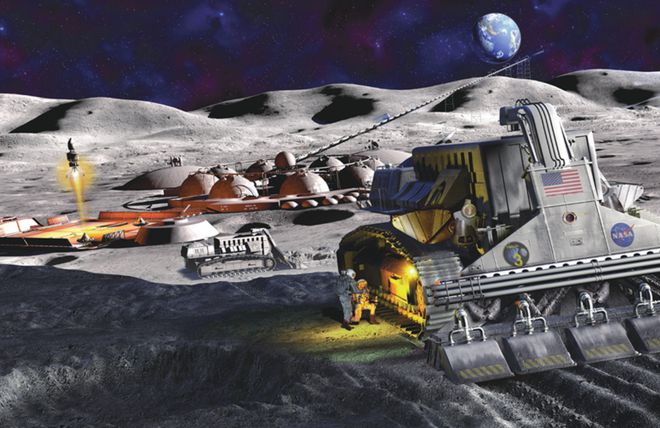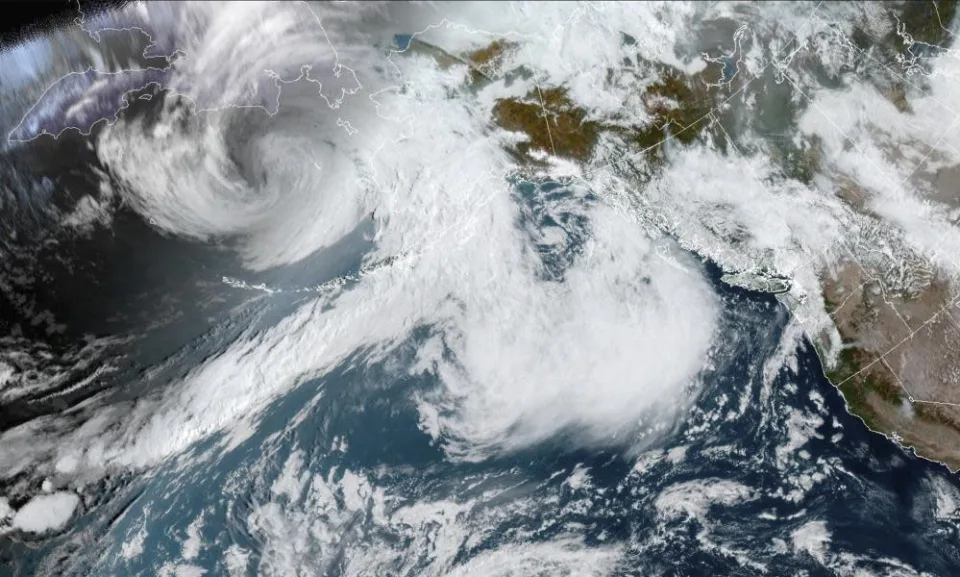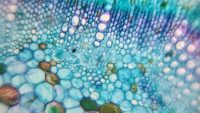When the US “Space” website introduced why NASA was in a hurry to “return to the moon“, it specifically mentioned the prospect of commercial exploitation of lunar resources, of which the most concerned is the abundant helium on the moon- 3 Resources.
According to reports, controllable nuclear fusion has the outstanding advantages of high energy density, cleanliness, abundant fuel and high safety, and is considered to be the ultimate energy source for mankind, while helium-3 can provide “the cleanest controllable nuclear fusion energy”. As one of the fuels for controlled nuclear fusion, it produces 12.5 times the energy of a uranium-235 nuclear fission reaction. More importantly, unlike nuclear fusion fuels such as deuterium and tritium, helium-3 does not produce the danger of neutron secondary radiation in the fusion reaction, and is cleaner and more controllable. The energy produced by the fusion of 100 tons of helium-3 can supply the world for one year. In addition, helium-3 is a key refrigerant for obtaining an extremely low temperature environment, and is an essential substance in frontier research fields such as superconductivity and quantum computing.
Industry experts told the Global Times reporter that the helium element on the earth is mainly helium-4, and the reserves of helium-3 are only about 0.5 tons. But helium-3, which is scarce on Earth, is surprisingly abundant on the moon. Experts said that the helium-3 on the moon mainly comes from the irradiation of the solar wind. As a product of solar nuclear fusion, the solar wind carrying helium-3 continues to erupt into space. When the solar wind hits the moon, since the moon has no atmosphere and no magnetic field, it acts as a super collector, storing helium-3 in the lunar soil on the lunar surface. Scientists estimate that during the billions of years the moon was formed, it may have been hit by as many as hundreds of millions of tons of helium-3 particles, a considerable part of which was preserved in the lunar soil. Although the earth’s atmosphere and magnetic field protect the evolution of life, they also block the solar wind carrying helium-3, which is the main reason for the scarcity of helium-3 on the earth.
The lunar samples retrieved by the American “Apollo” program and the Soviet “Moon” series of probes also proved that the content of helium-3 on the lunar surface is much higher than that in the crust, and the total amount of helium-3 in the lunar soil is expected to be 65 10,000-3.22 million tons. This means that the helium-3 obtained from the moon is enough to meet the energy needs of the earth for 10,000 years. Therefore, in the recent boom in lunar commercial development, many companies have proposed the idea of extracting helium-3 from the moon. According to the US “Capitol Hill” website, a US nuclear energy company has previously signed an agreement of intent for the exploitation of lunar helium-3 resources, which envisages using a special lunar rover to collect lunar soil on the lunar surface and transport them to a processing room for separation Helium-3 is extracted and stored, waiting for a launch vehicle to return it to Earth. Allegedly, the relevant equipment to collect helium-3 on the moon has been practically tested on the ground.
But Professor Ian Crawford of the University of London, UK, has questioned the economic viability of extracting helium-3 from the moon. He said that since helium-3 does not form rich areas in the lunar soil like the earth’s veins, it is necessary to process a large amount of lunar soil in order to separate enough helium-3, which means that a rather large processing facility is required. Relevant research reports show that if the ability to collect 100 tons of helium-3 from the moon is to be achieved, considering that the content of helium-3 in the lunar soil is very low (although the content of helium-3 is very high compared to the earth), thousands of special minecarts are needed. to meet the demand. Coupled with the huge processing equipment and space vehicles to and from the earth and the moon, the initial investment may be as high as trillions of dollars.
Crawford also mentioned that current estimates of the lunar helium-3 reserves are mainly based on samples brought back from the lower latitudes of the moon by the United States and the Soviet Union. But is it possible that helium-3 is unevenly distributed on the moon? This also requires further investigation of samples from the north and south poles of the moon in the future.
Experts said that China’s latest research results on lunar samples obtained by the Chang’e 5 probe will help advance the mining of lunar helium-3. Previous research believed that in order to separate helium-3 from the lunar soil, a high temperature environment above 700 degrees Celsius must be provided, which not only consumes high energy, but also slows down, which is not conducive to in-situ mining on the moon. A joint team from the Ningbo Institute of Materials Technology and Engineering of the Chinese Academy of Sciences, the Qian Xuesen Laboratory of the Fifth Academy of Aeronautics and Astronautics, the Institute of Physics of the Chinese Academy of Sciences, and Nanjing University found that there is a layer of amorphous glass on the surface of ilmenite particles in the lunar soil, which has extremely high The stability of the moon captures and preserves abundant helium-3 resources on the moon. Therefore, through the mechanical crushing method, the helium-3 stored in the ilmenite particles in the form of bubbles can be extracted at normal temperature without heating to high temperature. Moreover, ilmenite has weak magnetic properties and can be separated from other lunar soil particles by magnetic screening, which is convenient for in-situ mining on the moon. According to the total amount of lunar ilmenite, the total amount of helium-3 stored in the form of bubbles may be as high as 260,000 tons. If all of them are used for nuclear fusion, they can meet the global energy demand in 2600. These results not only provide new insights into the enrichment mechanism of helium-3 on the moon, but also lay a theoretical foundation for the in-situ mining and utilization of lunar helium-3 in the future, which is of great significance for exploring the effective utilization path of lunar resources.
What other minerals are worth mining on the moon?
In addition to helium-3, there are a large number of minerals on the moon that have mining value. Among them are rare earth elements and radioactive elements. As we all know, rare earth elements have unique magnetic or catalytic properties, are key components in electronic devices, and have important application value in military high-tech fields such as missiles, smart weapons, navigators, and jet engines. But mining these rare-earth elements is difficult, expensive, and unevenly distributed across the planet.
The BBC website said that rare earth elements and radioactive elements on the moon are widely present in Kripp rocks. According to reports, when the moon was formed, it was covered by a magma ocean hundreds of kilometers deep. As the temperature cools, the magma begins to solidify, forming rocks. When the degree of crystallization of the magma ocean reaches about 98%, incompatible elements (elements that do not like to enter the solid, but prefer to enter the melt) are highly concentrated in the residual melt, and finally form Kripp between the lunar crust and the lunar mantle Rock interlayer, named for its richness in potassium, rare earth elements and phosphorus. It is estimated that the resources of rare earth elements, thorium and uranium contained in the lunar Kripp rock are about 670 million tons, 840 million tons and 360 million tons respectively.
The report also mentioned that the extraction of rare earth elements on earth may cause serious pollution to the environment. “With that in mind, the moon is the best alternative. It could be a huge multi-trillion pound market.”
Considering that traditional methods of mining rare earth elements are not suitable for lunar or space environments, scientists are looking for new concepts of mining methods, including “biomining” using microorganisms. According to the British journal “Nature Communications”, British scientists assessed the biomining potential of three bacteria on the International Space Station under three conditions: microgravity, simulated Martian gravity and Earth’s gravity, and measured the extraction efficiency of these bacteria – from basalt (similar to most of the surface of the Moon and Mars) the content of 14 different rare earth elements leached. One of the microorganisms named Sphingomonas can leach rare earth elements from basalt under three gravity conditions, and the leaching rate of the bacteria is similar under the three gravity conditions. The most abundant rare earth elements in basalt the highest leaching rate.
In addition, the moon is also extremely rich in other mineral resources. The 17 most common elements on the earth can be found everywhere on the moon. Taking iron as an example, only the 5 cm thick sand on the lunar surface contains hundreds of millions of tons of iron, while the entire lunar surface has an average of 10 meters thick sand. Iron on the lunar surface is not only exceptionally abundant, but also easy to mine and smelt. For example, the iron on the moon is mainly iron oxide, as long as the oxygen and iron are separated; in addition, scientists have developed ways to use lunar soil and rocks to make cement and glass. In the lunar surface, aluminum content is also very rich.
It is worth noting that the mineral resources mined on the moon do not necessarily have to be shipped back to Earth. As humans go into space, it is impossible for all building materials to be provided by the earth. The moon’s rich mineral reserves and low-gravity environment allow it to provide a large number of key raw materials for the construction of lunar bases and even space facilities.
Is mining asteroids feasible?
Compared with “moon mining”, resource collection on asteroids farther away from humans sounds less feasible. But scientists believe that, technically speaking, this is not impossible.
According to NASA statistics, tens of thousands of near-Earth asteroids have been discovered, and there is an asteroid belt composed of millions of rocks of various sizes between the orbits of Jupiter and Mars. Most of them are remnants left over from the formation of the solar system. In addition to scientific research value, some of these asteroids also contain rich resources, such as metal raw materials such as iron and platinum with high purity.
Compared with mining on the moon or Mars, there is almost no gravity on asteroids, which can easily transport large pieces of material, which is more feasible. Therefore, “asteroid mining” has also won great attention from various countries. In November 2015, then-President Barack Obama signed the U.S. Commercial Space Launch Competition Act, which allows individuals or companies with the necessary technology to land on asteroids to occupy planets and other space resources. In 2016, the Luxembourg government became the first European country to express a clear interest in the asteroid mining business.
According to reports, the first step in “mining asteroids” is to use professional equipment to confirm the mineral types and mining prospects of the target asteroid. The US private company Planetary Resources is using satellites to search for the most suitable asteroids for development. NASA plans to launch the Psyche asteroid mission next year. The asteroid, 16 Psyche, may be the bare metal core of a small, unformed planet in the early days of the solar system, measuring 140 miles in diameter and made mostly of iron, nickel and rare metals. There have been media estimates before that if all the metals on this asteroid are transported back to Earth, the total value will be an astronomical figure.
It is said that in the selection of technical solutions, mining machines and equipment can be powered by solar energy, which can reduce the fuel required to transport from the earth to the asteroid; during the mining process, all spacecraft and equipment must be tightly fixed on the asteroid to prevent weightlessness. And drift away lost in space.
Chris Levich, president and chief engineer of Planetary Resources, said that mining asteroids is not a mystery. “We are just repeating what has been done in history, just as colonists landed on the North American continent and used local resources to develop He said, considering that it takes a lot of fuel to escape the earth’s gravity, “no matter where you go to the solar system, as long as you get into the earth’s orbit, you will be halfway there.” way. For example, asteroids are rich in resources such as water, iron, nickel and cobalt. “Using technologies such as 3D printing, you can get materials from asteroids and then make all kinds of things. This will eliminate the need to rocket from Earth to transport tools, machinery and even resident materials, further reducing the cost of space exploration.” But he also admitted , there are still technical and legal issues in the development of asteroids, which need to be further resolved.




GIPHY App Key not set. Please check settings